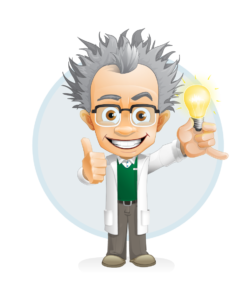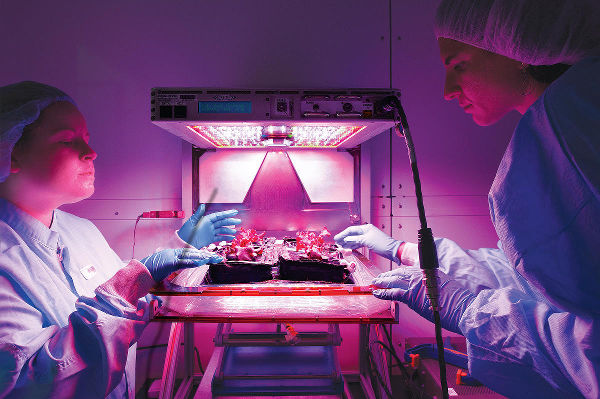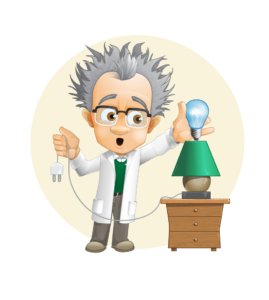I, Dr. Bulb, thought my groceries were getting too expensive—but it’s nothing compared to astronaut food. The price of eating is one of the biggest issues in space travel, according to Modern Farmer. It cost roughly $10,000 A POUND to send food to the International Space Station (ISS)!
The solution: Growing food in space. What’s the best light source to grow plants in space? It’s no that surprise the answer is LEDs.
On Earth, the benefits of LED lighting as grow lights coincide with many of the reasons they’re used in space. The long-life, efficiency, durability, and versatility of LEDs are ideal for space missions where power and resupply of things from Earth is extremely limited.
LED lights have been used for growing since the late 1980s; however, they didn’t always work as well as they do now. Today’s LEDs have significantly improved, causing the growth of higher quality plants.
NASA has been testing plant growth in space for a long time, but the results have yet to be used to sustain space travelers. Later this year, the Vegetable Production System (VEGGIE) program is set to hit the ISS. NASA plans to launch a set of Kevlar pillow-packs, functioning as planters for six romaine lettuce plants. The lettuce will be grown under red and blue LED lights, resulting in purple light bathing the plants for photosynthesis. The plants will be ready to harvest after only 28 days.
Unfortunately, they won’t be able to eat the first harvest. The plants need to be sent back to Earth to be tested for microorganisms before it is determined if the space-grown lettuce is safe to consume. I, Dr. Bulb, can’t wait to find out.
If I weren’t already a fan of NASA, they also recently installed 1,300 architectural LED troffers at their Washington, D.C. headquarters. The owners of the building expect the new fixtures to deliver energy savings of 52 percent over the existing T8 fluorescent fixtures! Even better, an additional 5,200 troffers will complete the lighting upgrade.
For more lighting news, follow me @doctorbulb, like me on Facebook, check out my Google+ profile, and subscribe to my blog!



